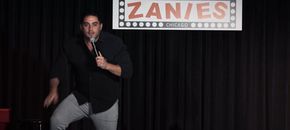Meet the Woman Behind All of Your “Favorite” Activations

We’re living in the age of ‘experiences’. While in the past this word didn’t need special contextual framing, today it’s the marketing equivalent of hitting the motherload and every brand out there is trying to create memorable moments in order to become your “friend”.
Cynthia Samanian knows this better than anyone. As the founder and CEO of Hidden Rhythm, an experiential agency for natural food and wellness brands, she has helped build numerous promotional campaigns, events and pop-ups in San Francisco and beyond, for brands like Bare Snacks and Brandless.
Ever wondered who’s behind the curtain, creating the “activations”, while you’re snapping cute selfies? What does it take to get millennials excited these days? And what’s next for influencer culture? In our quest to highlight the Bay’s most creative women, we caught up with Samanian on all things experience.
How did you arrive at organizing activations and experiences?
“My path to experiential marketing came through my passion for food. After many years of working more “traditional” jobs in corporate finance and product management, I decided to go out on my own and create a food media site focused on the art of gathering. I promoted the site through monthly pop-up dinners, and that was my first foray into events. Over the next year, I learned how to secure brand sponsorships and navigate the world of influencers. Eventually, I found my role in designing and producing experiences so much more fulfilling – not only personally, but also professionally.”
What are some of the most exciting recent events you’ve gotten to work on?
“Most recently, I worked with Cora on a powerful activation at the Women’s March in Washington D.C. Cora is a feminine care company based in San Francisco. To bring their product and ethos to life, we produced a luxury bathroom trailer activation at the Women’s March. The trailer was wrapped in Cora’s messaging and each of the private stalls was adorned with floor to ceiling walls of cotton, luxurious hand soap, and iPads showcasing a video prepared by the Cora team for the March. We also set up a heated tent with free posters and buttons for marchers to take. What was exciting about this activation was that it was the perfect example of alignment between a brand and the audience.”
How’s the San Francisco crowd unique in regard to your work?
“The Bay Area crowd is hard to please, which also makes it a fun challenge. We’re so spoiled to have great access to restaurants, music, and culture, that the bar is already really high to wow a crowd.”
What do you think is next for influencer culture?
“The influencer landscape is changing rapidly. Just a year ago, our agency produced several influencer-only dinners and events on behalf of brands; that was a very common request. Now, we’re finding that brands are more interested in consumer-facing activations that reach more people directly paired with an influencer component to help amplify the impact.”
What are some spaces in SF that you think are well-done, hospitality and experience-wise?
“Solage in Calistoga is one of my favorite places to get away and relax. They’ve truly nailed the hospitality experience from check-in to check-out. In a space where you are looking to unwind and disconnect, their team does a fantastic job of being there when you need them but otherwise disappearing into the background.
“Another experiential gem that my fellow foodies will appreciate is Oaktown Spice Shop in Oakland. Despite carrying some of the world’s most exotic spices, they’ve created a retail atmosphere that’s approachable and inviting. It’s impossible not to sniff multiple jars of spices and even take a few of their free recipe cards. They also offer workshops and classes.”
What is the future of experiential events and pop-ups?
“I believe that experiential is here to stay. In a time when consumers are overwhelmed with nonstop outbound marketing, experiential remains to be one of the most powerful ways for brands to engage and ultimately drive loyalty. Some of the trends I anticipate in our industry include a focus on sustainable and zero-waste events as well as greater sophistication around calculating the ROI (return on investment) of an event.”








